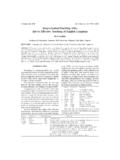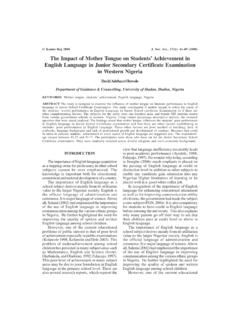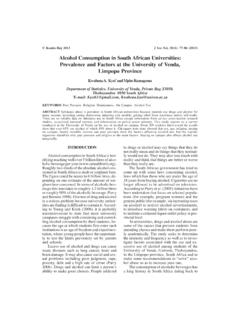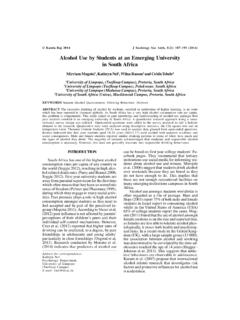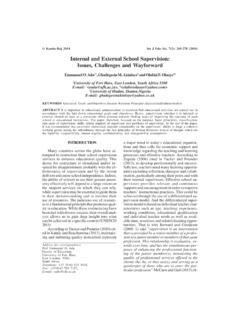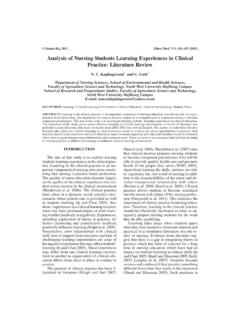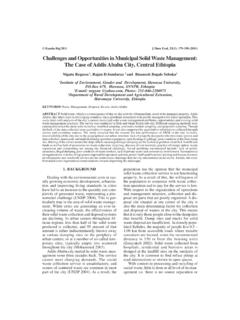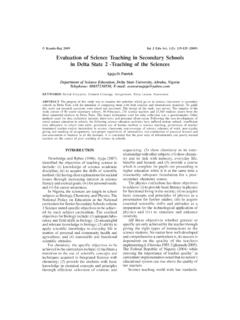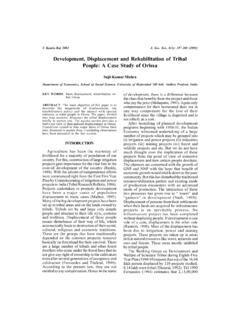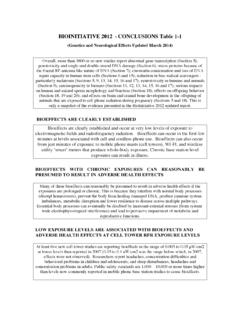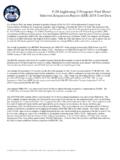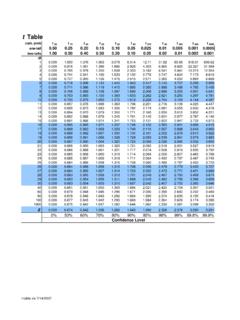Transcription of Gangsterism as a Cause of Violence in South African ...
1 Gangsterism as a Cause of Violence in South African Schools:The Case of Six ProvincesVusi Mncube1 and Nomanesi Madikizela-Madiya2 University of South AfricaE-mail: Gangs. Violence . school . South AfricaABSTRACT This paper reports on a study that was conducted in six provinces of South Africa namely Gauteng, North West,Limpopo, Western Cape, KwaZulu-Natal and Mpumalanga. The aims of the study was to explore the perceptions and experiencesof school stakeholders of school Violence and the nature of Violence that takes place in South African schools. This was aqualitative study that used interviews and documents. A questionnaire was also employed for generalisation. The scourge ofviolence in South African schools is a Cause for concern; daily reports appear in the written and electronic media about highlevels of Violence , physical and sexual abuse and gang related activities in our schools.
2 The findings suggest that Gangsterismis of serious concern in South African schools and is one of the external factors that exacerbate Violence in schools. This is truein all provinces studied and particularly in the Western Cape and Limpopo. The study recommends that there is need to supportcurrent efforts aimed at increasing basic levels of good management, school effectiveness and teacher professionalism in SouthAfrican schools. A well-ordered school is also a less violent school . Schools that experience problems of Violence need an activesafety and security committee that monitors Violence ; recommends Violence prevention measures; and oversees its AND BACKGROUNDG angsterism is a global phenomenon.
3 Thepresence of gangs in schools in the United Statesof America has been reported as having doubledbetween 1989 and 1995 (Gasa 2005:70).Huizinga (1997:1) reported that youth gangs arelinked to serious crime problems in elementaryand secondary schools in the United States, andthat scholars report much higher drug availabil-ity when gangs are active at their schools. Re-search also indicates that schools that have apresence of gangs have a higher violent victim-ization rate than those that do not have a gangpresence and teenagers who are gang membersare far more likely to commit serious and violentcrimes than other teenagers (Huizinga 1997: 1).Crawage (2005: 45) contends that gangs inschools should be seen as a community problemin South Africa since schools are a part of thecommunity; they reflect the problems of thatcommunity.
4 These learners are often challeng-ing and dismissive of legitimate (2005: 45) defines Gangsterism asthe evolution of an urban identity determinedalong racial and economic lines. It includes theformation of groups with the aim of commit-ting Violence and crime, and to defend them-selves physically against Violence of othergroups. In addition, Musick (1995) classifiesgangs into three different categories namelyscavenger gangs territorial gangs and corporategangs. The scavenger gang s crimes and trans-gressions are usually not planned, and thisgroup s members are often low achieversor school dropouts. Territorial gangs are well-organized andgang members have initiation rites whichseparate them from non-members.
5 Often,prospective members have to prove theirloyalty to the group by fighting. The corporate gangs are highly structuredcriminal conspiracies that are organized tosell drugs - teenagers as young as fourteencould become members. All gangs havenames and recognizable emerge from within communitiesthemselves and this phenomenon has many rootcauses like socioeconomic conditions (unem-ployment, low-income employment, and poorliving conditions) all leading to conditions ofpoverty and deprivation (The Portfolio Commit-tee on Education 2002). Within schools, andparticularly in the Grade 4 year, the followingbehaviours become more and more prevalent:poor academic performance, learning difficul-ties, truancy, attrition antisocial behaviour duelow Portfolio Committee on Education(2002) corroborates Last (2001) who contendsthat there are many reasons why young chil-dren choose to join a gang.
6 In school settinglearners who become easy recruits for gangster-ism are those learners who are underachievers,poor learners, or have language difficulties see Kamla-Raj 2014J Sociology Soc Anth, 5(1): 43-50 (2014)themselves as losers in the academic can be easily approached by a gang andbe recruited into the organisations. Last (2001)explains this well - here they become some-one , part of an organisation of kids just likethemselves. They have a new family whomthey tend to spend more and more time gang leaders recruit younger memberswho are unhappy and struggling. They lure themwith the promise of fraternity and are told that the worst that can happen tothem if they commit a serious crime is two yearsin a juvenile facility, which is a small price topay for belonging (Last 2001).
7 Several initiatives have been undertaken bythe South African government in order to trycurbing Violence in schools and in general. Forexample, there is currently an initiative on gun-free society where the fire-arm holders are re-quired to re-apply for the issue of firearm li-censes; Education Laws Amendment Act 31,2007 has been legislated and deals with searchand seizure of illegal drugs and dangerous weap-ons from students attending the school (Depart-ment of Education 2007). The law also statesthat the governing body of a public school mustadopt a code of conduct for the learners, afterconsultation with the learners, parents and edu-cators of the school . Research is needed on itsimpact, and whether there is or should be a par-allel code of conduct for teachers.
8 Conceptu-ally, this relates to whether more democraticschools are more preventive of FrameworkThis theoretical framework draws mainlyfrom a report of Violence in schools written byMncube and Harber (2012). The contention thatschools are a microcosm of society within whichthey are located and that they merely reflect ormirror the Violence of the broader society is aworrying factor the fact that schools are nobetter than and cannot protect children from thenegative elements of the broader society is notright. However, schools are not necessarily com-pletely vulnerable to external Violence in a vio-lent society. A key factor in the extent to whichschools can resist Violence in the broader soci-ety is the extent to which the school is, and seesitself as, a well-organised and managed com-munity with a determination to protect and carefor its staff and learners by means of a clearapproach to safety and security.
9 Research suggests that the more effectivelythe school is run, the less chance of violencecoming in from the outside and the less chanceof it being generated inside (Harber 2001). Fur-ther, a well-run school with a more inclusive,democratic environment helps to foster a cli-mate of openness and a sense of ownership, com-mitment, and responsibility amongst all mem-bers and therefore strengthens its determinationto resist external Violence and minimise inter-nal Violence (Mncube and Harber 2012). Wellrun schools serve as role models in the fightagainst Violence in schools they had actuallystopped using corporal punishment in line withthe law, therefore both reducing an internal cli-mate of Violence and improving relationshipsbetween staff and learners.
10 Instead, throughcodes of conduct, clear implementation of therules and alternative forms of punishment, suchas clearing up litter in the schools, are used toprovide an ordered, safe, and essentially peace-ful environment where both internal and exter-nal crime and Violence are reduced to a mini-mum (Harber 2001).There are many effective and well-organisedschools in South Africa. Importantly, there aremany examples of such schools that are func-tioning effectively, achieving good examinationresults despite the fact that some of them aresituated in areas affected by poverty and poorresources (Harber 2001: 66; Bloch 2009: 5). Insuccessful schools there is a detailed set of plan-ning processes and systems to ensure success,no magic formula.
